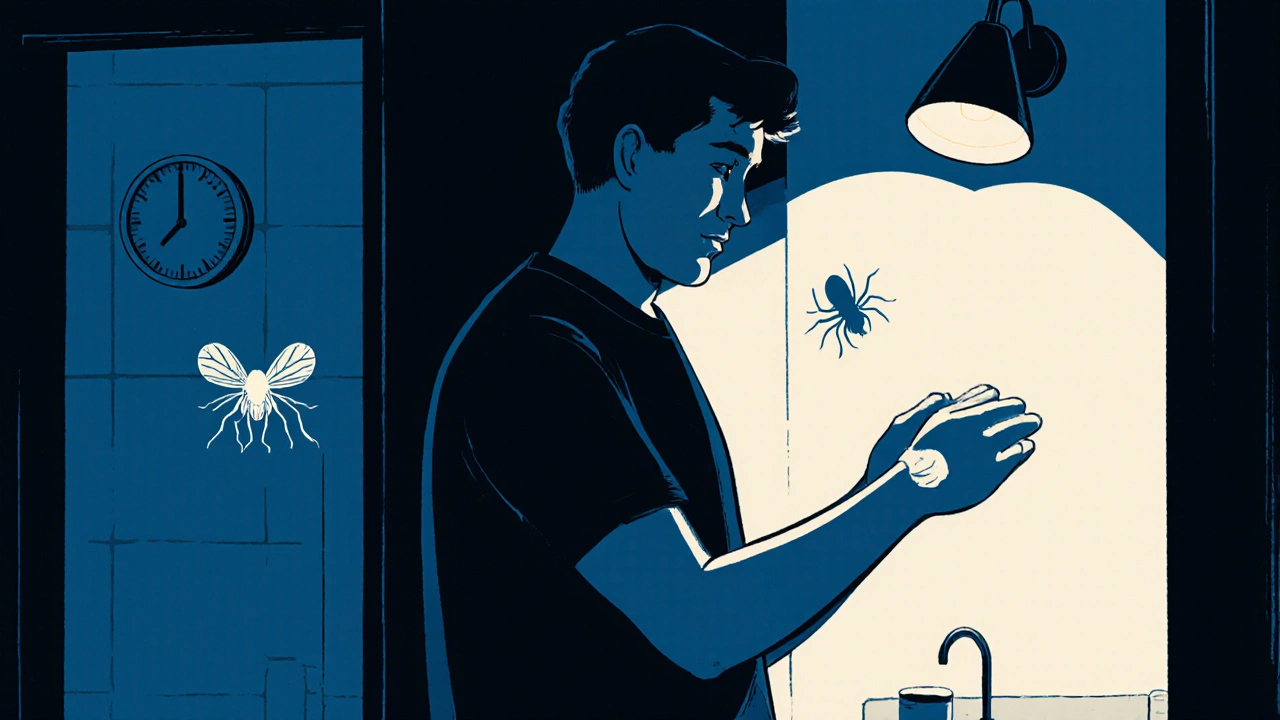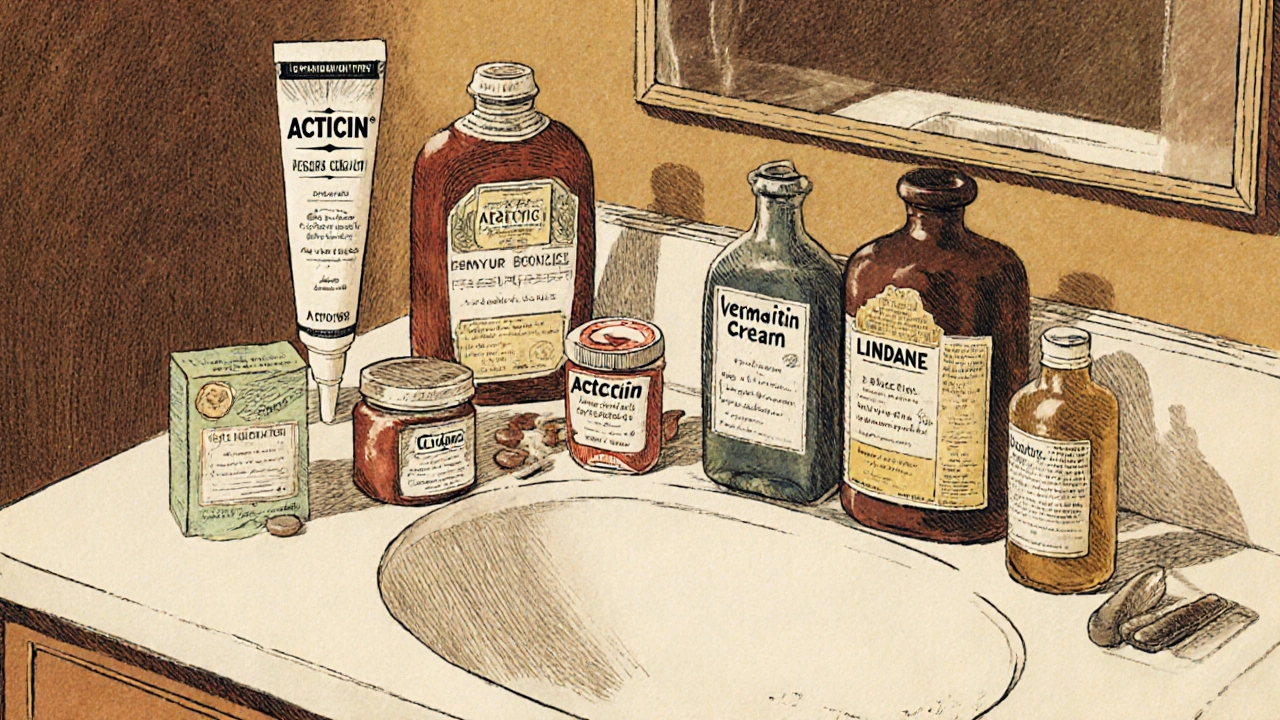Scabies Treatment Recommender
Choose Your Treatment Factors
Select the options that best match your situation to get personalized recommendations for scabies treatment.
Recommended Treatments
Based on your selections, the following treatments are most suitable for your situation.
Key Considerations
When treating scabies, Acticin is a topical cream that contains 5% permethrin, the most widely recommended first‑line medication for the condition. It works by paralyzing the mites that cause the rash, clearing the infection in just one or two applications. But Acticin isn’t the only option on the market, and many patients wonder whether another product might be cheaper, have fewer side‑effects, or work better for heavy infestations. This guide lines up Acticin against the most common alternatives - benzyl benzoate, sulphur ointment, ivermectin, crotamiton and lindane - so you can see the real differences without sifting through scattered pharmacy leaflets.
Why a Comparison Actually Helps
Scabies isn’t just a itchy nuisance; it spreads quickly in crowded settings and can lead to secondary bacterial infections if left untreated. Choosing the right medication therefore affects how fast you get relief, how likely you are to pass the mites to family members, and whether you’ll experience irritation. By breaking down each treatment’s active ingredient, concentration, dosing schedule, reported cure rates, side‑effect profile, contraindications and typical price, you’ll get a clear picture of the trade‑offs.
Quick Takeaways
- Acticin (permethrin 5%) tops the list for overall efficacy (≈95% cure rate) with low irritation risk.
- Benzyl benzoate is cheap but can cause a burning sensation, especially on sensitive skin.
- Sulphur ointment is the oldest remedy; it works but needs nightly application for a week.
- Ivermectin oral tablets are useful for crusted scabies or when topical use is impossible.
- Crotamiton and lindane have niche roles but carry higher side‑effect concerns.
Key Players in the Scabies Market
Benzyl benzoate is a oil‑based topical agent that kills mites by disrupting their cell membranes. It’s been on the UK market for decades and is sold over‑the‑counter in concentrations ranging from 10% to 25%.
Sulphur ointment contains elemental sulphur suspended in a petroleum base. Historically the go‑to treatment before modern synthetics, it’s still recommended for infants and pregnant women because it’s non‑systemic.
Ivermectin is an oral antiparasitic originally developed for river blindness. A single dose of 200 µg/kg can eradicate scabies in many cases, and repeated dosing is common for severe infestations.
Crotamiton works as both a scabicide and a mild antihistamine, easing itching while killing mites. It’s available as a 10% cream or lotion.
Lindane (γ‑hexachlorocyclohexane) is a neurotoxic insecticide that was once popular but is now restricted due to safety concerns.
Scabies is a contagious skin infestation caused by the mite Sarcoptes scabiei. The mites burrow under the epidermis, laying eggs that trigger an allergic reaction - the hallmark intense itching.
Skin parasites include a range of arthropods such as mites, lice and ticks that feed on human tissue. Scabies is the most common mite‑related skin parasite worldwide.

Side‑by‑Side Comparison Table
| Product | Active Ingredient | Typical Concentration | Application Regimen | Reported Cure Rate | Common Side‑effects | Contraindications | Average UK Cost (per treatment) |
|---|---|---|---|---|---|---|---|
| Acticin | Permethrin | 5% | Apply night‑time, leave 8‑14 h, repeat after 7 days if needed | ≈95 % | Mild burning, itching | Severe allergy to pyrethroids | £6‑£9 |
| Benzyl benzoate | Benzyl benzoate | 10‑25% | Apply morning, leave 24 h, repeat after 7 days | ≈80‑85 % | Intense burning, stinging | Open wounds, infants <2 months | £2‑£4 |
| Sulphur ointment | Elemental sulphur | 5‑10% | Nightly application for 7‑10 days | ≈70‑80 % | Odor, mild irritation | Sulphur allergy | £1‑£2 |
| Ivermectin | Ivermectin | 200 µg/kg oral dose | Single dose; repeat after 7 days for crusted cases | ≈90 % (systemic) | Headache, dizziness, nausea | Pregnancy, lactation, severe liver disease | £15‑£20 per tablet pack |
| Crotamiton | Crotamiton | 10% | Apply twice daily for 3‑5 days | ≈75‑80 % | Mild itching, dryness | Known allergy to drug | £4‑£6 |
| Lindane | Lindane (γ‑hexachlorocyclohexane) | 1‑2% | Apply night‑time, leave 8‑10 h, repeat after 7 days | ≈85 % (historical) | Neurotoxicity, seizures, skin irritation | Pregnancy, children <2 years, neurological disorders | £5‑£8 (restricted) |
How to Choose the Right Option for You
Start by asking yourself three quick questions:
- Do I need a single‑application solution? If yes, Acticin or lindane are the only true one‑off topical choices.
- Is my skin very sensitive or do I have a known allergy? Sulphur ointment and low‑strength benzyl benzoate are gentler, while ivermectin bypasses the skin entirely.
- Do I have a severe or crusted case that needs systemic therapy? Oral ivermectin is now the gold standard for those scenarios.
For most healthy adults with a typical infestation, Acticin remains the most cost‑effective, high‑efficacy first‑line choice. Reserve benzyl benzoate or sulphur for situations where prescription permethrin isn’t available or when you need a budget‑friendly over‑the‑counter option.
Practical Tips for Using Any Scabies Treatment
- Wash all bedding, clothing and towels in hot water (≥60 °C) and dry on high heat.
- Treat all household members simultaneously, even if they don’t show symptoms.
- Avoid applying creams to broken skin; use a clean gauze pad to cover lesions if needed.
- For topical agents, apply a thin layer covering the entire body from neck down, including soles of feet.
- Follow the exact timing in the product leaflet - early removal can dramatically lower cure rates.
Potential Pitfalls and How to Avoid Them
Even the best medication can fail if you miss a step. Common errors include:
- Insufficient coverage: Missing the finger webs, groin folds or scalp can let mites survive.
- Too short contact time: Rinsing off a cream after 2 hours instead of the recommended 8‑14 hours reduces potency.
- Skipping the second dose: Some mites hatch after the first treatment; the repeat dose catches them.
- Re‑infestation from untreated contacts: Treat pets only if they show signs; most animal scabies species differ from human mites.
By keeping a checklist next to your bathroom mirror, you can tick off each step and stay on track.

Bottom Line: Which Product Wins?
If you value a high cure rate, short treatment course and minimal irritation, Acticin (permethrin 5%) is the clear frontrunner. Benzyl benzoate is a solid backup when cost is the main driver, but be ready for a burning sensation. Sulphur ointment works for infants and pregnant women, though it demands patience. Ivermectin shines for severe or crusted scabies, offering a convenient oral route. Crotamiton and lindane belong in niche roles and should be prescribed only after weighing their side‑effect risk.
Frequently Asked Questions
How quickly does Acticin start working?
Most users notice a reduction in itching within 24‑48 hours, and the rash fades completely in about a week if the medication is applied correctly.
Can I use Acticin on children under 2 years?
In the UK, Acticin is approved for children older than 2 months. For infants younger than that, sulphur ointment or a pediatric‑approved permethrin formulation is recommended.
Is it safe to use benzyl benzoate if I have eczema?
Benzyl benzoate can exacerbate eczema because of its strong burning effect. It’s best to choose a milder option like permethrin or consult a dermatologist first.
When should I consider oral ivermectin?
Oral ivermectin is advised for crusted scabies, treatment‑resistant cases, or when topical agents can’t be applied (e.g., severe skin breakdown). It’s also useful for large households where coordinated topical treatment is difficult.
Are there any drug interactions with permethrin?
Permethrin is a topical agent, so systemic drug interactions are rare. However, avoid using it on skin already treated with other scabicides unless a doctor advises a wash‑out period.




Barbara Ventura
October 26 2025Wow, this breakdown, it's really thorough, and the table, it's crystal‑clear, but I have to say, the cost differences, they could use a bit more context, especially for those on a tight budget.